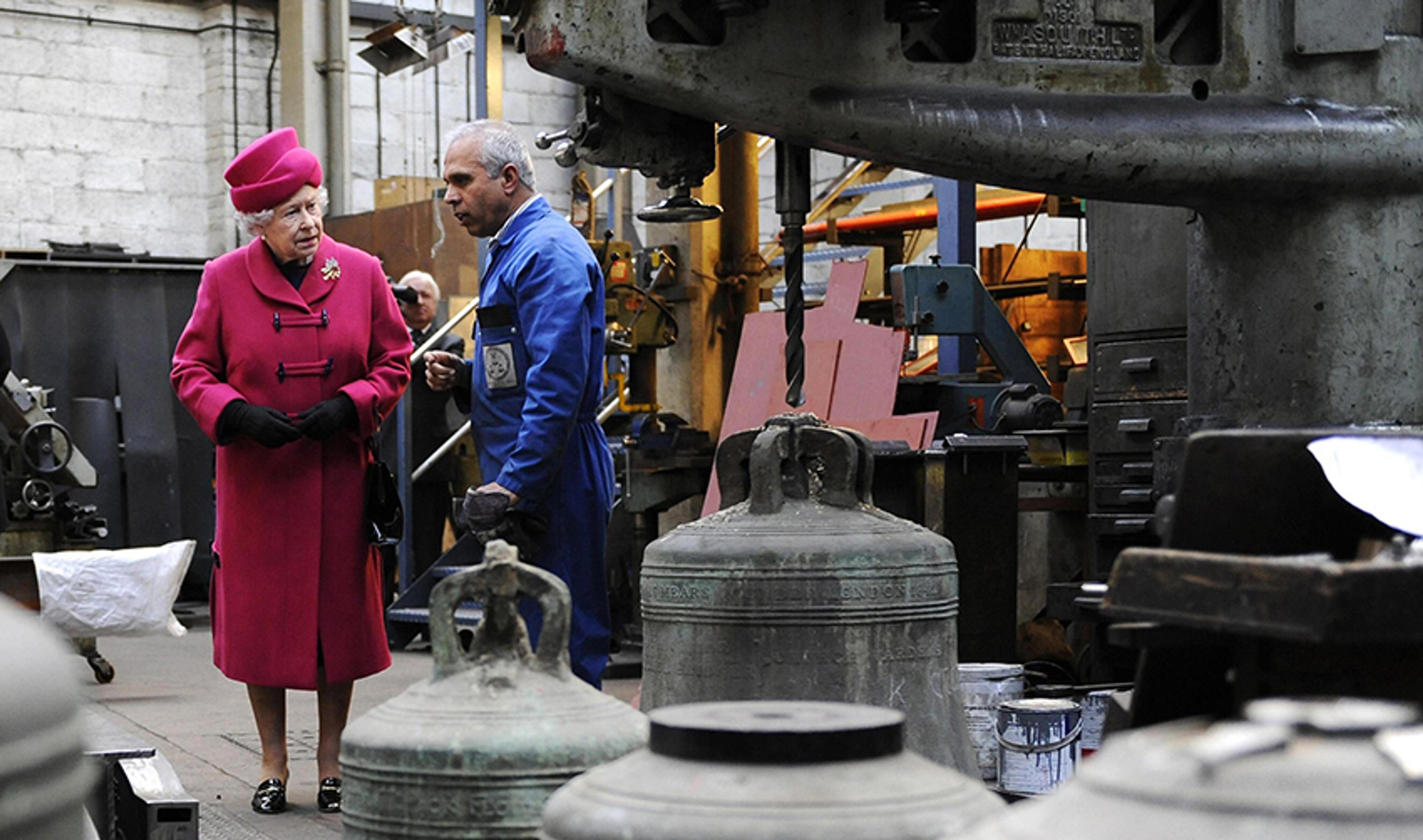The Past
Elizabeth II visits the bell foundry in 2009. Photograph courtesy of Adrian Dennis
Over centuries, bell founding has flourished in Whitechapel in diverse manifestations through a sequence of different companies and a long line of bell founders.
Geoffrey Chaucer wrote of the presence of bell casting when he lived above the gatehouse in Aldgate, but the earliest dated record is of Stephen Norton founding bells to the east of the City of London in 1363.
The Elizabethan bell foundry owes its origin either to Robert Doddes in 1567 or Robert Mot in 1572, operating from a site where today Commercial Street meets Whitechapel High Street. One of Mot’s bells cast in 1588 still hangs in St Clement’s Danes in the Strand were it chimes daily.
Around 1738–46, Thomas Lester re-established the bell foundry on the corner of Fieldgate Street and Whitechapel Road on a site previously occupied by the Artichoke Inn. Here the company evolved and was reconfigured through bankruptcy, multiple partnerships and changes of ownership. It was known variously as Lester, Pack & Chapman until 1818, Mears until 1865, Mears & Stainbank until 1968 and then Whitechapel Bell Foundry until 2017. A repeated pattern emerged of skilled foremen taking over as bell founders, notably Thomas Lester in 1738, Thomas Mears in 1818 and Arthur Hughes in 1904.
In 1810, Mears listed 1,858 bells cast on site since 1738, including orders for St Petersburg in 1747 and Philadelphia in 1754. The foundry’s market expanded with the Empire through the nineteenth century, supplying bells to hundreds of churches in colonies across the globe. The business also sustained itself through diversification, acquiring a reputation for Whitechapel pestles and, in 1817–18, supplying cast iron for the great staircase at Burlington House. During World War II, the foundry contributed to the war effort by casting parts for airplanes and submarines. Then, after the war, the foundry was revitalised by orders to replace church bells destroyed in the bombing.
From the reign of Elizabeth I until the reign of Elizabeth II, the story of bell founding in Whitechapel has been one of innovation and adaptation in response to changing times and technology.
The two most famous bells cast in Whitechapel are the Liberty Bell in 1752 and Big Ben in 1858, both of which have acquired international significance as symbols of hope and freedom. In 1776, the Liberty Bell became the symbol of American Independence, later adopted as a symbol of freedom by abolitionists in the nineteenth century and the civil rights movement in the twentieth century. The chimes of Big Ben are the most famous in the world, broadcast by the allies to occupied Europe during World War II as a symbol of democracy and resistance to fascism.
